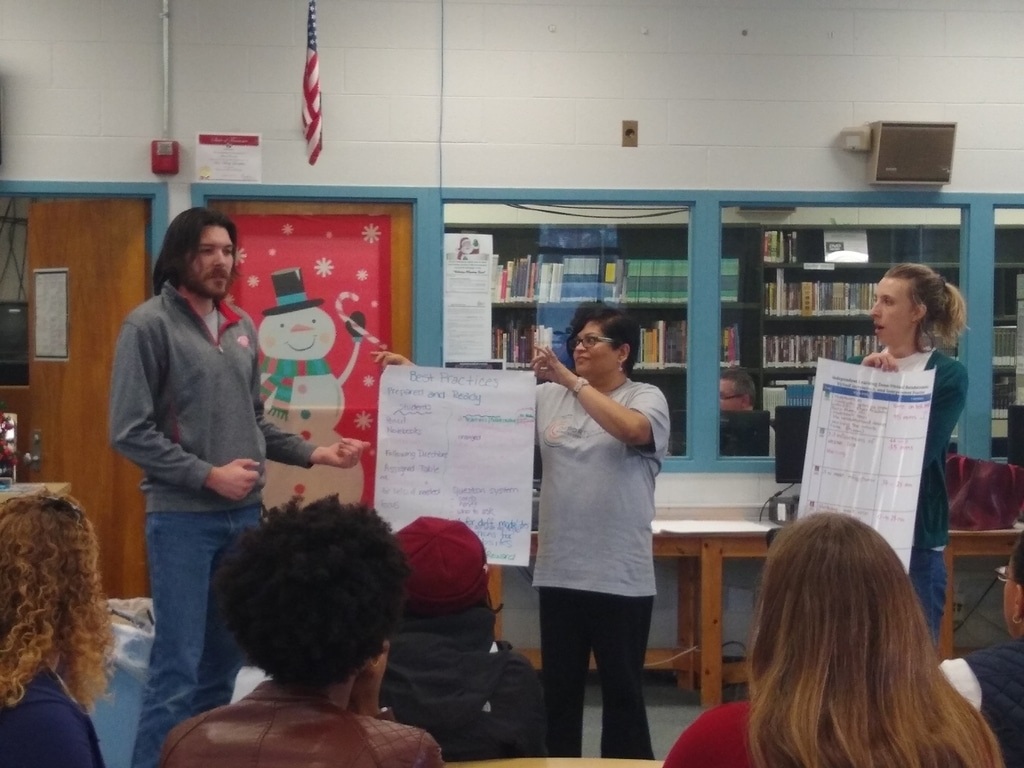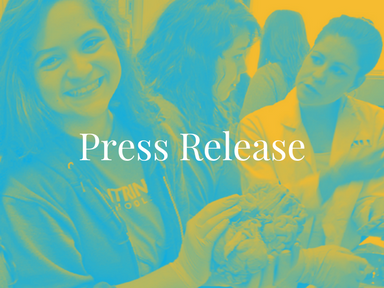Building Community
3 Fundamentals of Teacher Collaboration in Personalized Learning
Topics

When educators design and create new schools, and live next gen learning themselves, they take the lead in growing next gen learning across the nation. Other educators don’t simply follow and adopt; next gen learning depends on personal and community agency—the will to own the change, fueled by the desire to learn from and with others. Networks and policy play important roles in enabling grassroots approaches to change.
How a strong start, clear boundaries, and deliberate reflection are key in creating a culture of collaboration
While the concept of teacher collaboration is not new in K-12 schools, the value of shared practice is often amplified for teams implementing personalized-learning models. In many of these models, teachers work more collaboratively and often get new information about students daily. Because of this, teachers need to connect with each other and familiarize themselves with relevant student information so that they can support all students the same way. This could be anything from knowing student skill levels to implementing specific intervention strategies.
Through New Classrooms' work partnering with schools using Teach to One: Math (TTO), we have identified three key ways that strong teacher collaboration can be instilled into a personalized-learning environment.
Setting Norms
Shifting to a collaborative teaching model is a lot like going from neighbors to roommates. What you do in your own classroom—whether it's grading, discipline, or taking attendance—will have to adjust. So at the beginning of each year, it is important for all teachers to align expectations on a variety of classroom components, from academic to operations. This allows teachers to establish logistics, assign specific roles, agree on a behavior consequence structure, and norm on grading weights. In learning models such as TTO, a student will develop relationships with each teacher, making this norm-setting process important in order to start the school year strong.
After these norms are established, teachers should commit to continuous collaboration, a process we call "Common Planning." These recurring meetings should take place at least a few times per week to ensure teachers are able to regularly analyze data and develop appropriate interventions. Common planning involves a discussion of expectations for a given lesson, including how student work and engagement will be evaluated. This time creates a space for teachers to share best practices, suggest useful manipulatives, and flag common student misconceptions they have seen. These meetings allow teachers to feel more prepared and better equipped for their daily lessons.

The teaching team at Gray Elementary, home of the oldest-running TTO program. (Courtesy of Roman Blair)
The math team at William P. Gray Elementary School in Chicago is a great example of this in practice. Gray's team has a range of backgrounds and big differences in years of experience. On paper, one would think that their daily common planning might end in a draw on all topics. But if there's one quality that makes the math team at Gray successful in their implementation of TTO, it's their collaboration. They approach every discussion with an open mind and their students' interests at heart. Hearing them talk is inspiring. They are courteous, good-humored, and, most importantly, they support each other.
Collaborative Accountability
When teachers go from being neighbors to roommates in a personalized-learning environment, they have to learn to live in close proximity and often have to set parameters on how the living arrangement is going to work.
This looks different across all schools, especially depending on the setup of the learning space. Adaptability and communication are necessary when it comes to these day-to-day hurdles in a learning space. Teachers must be willing to express their feedback to other teachers so that these obstacles do not affect student learning.
Teacher leadership is a critical role to fill to ensure a team of teachers continues to work productively, maintains open communication channels, and keeps itself accountable. Each TTO school, for example, has an appointed math director whose responsibilities include maintaining the vision of culture for the team. This person is expected to hold the team to the agreed upon procedures in their learning space and also recognize strong teaching strategies that can be shared with the team. This way, teams are in a constant cycle of improvement.
Intentional Reflection
Teachers in a personalized-learning model should meet as the school year progresses to revisit some of their practices. This can be done during midyear professional-development days or during a dedicated common-planning time. Ways to evaluate this effectiveness can be anything from qualitative teacher feedback to quantitative data from student grades or test scores. Setting aside this time for reflection and discussion allows for a true assessment of how well things are going, while creating an opportunity for improvement.

Teachers share their best practices with colleagues in their midyear meeting. (Courtesy of Abby Engelberth)
An example of this was seen at Brainerd High School and Howard School of Academics and Technology in Chattanooga, Tenn. Led by the director of instructional support, Sarah Towler, these teams set aside a day at the beginning of the second semester to discuss best practices utilized within their implementation of TTO. Together, the teachers discussed the success in the first semester, where students had grown academically more than expected. It was through the teacher collaboration and dedication to the individual needs of students that this outcome was possible. In this time, teachers were able to reflect about how they worked best together and how they wanted to improve on that work in the second half of the year.
Personalized learning is a shift for everyone involved. When teachers adopt a growth mentality and execute the model with fidelity, everyone benefits. Students are held accountable because they know that the same routines, rules, and procedures are expected with every teacher they encounter. They know that certain behaviors will result in the same consequences, no matter where or how they are learning that day. In turn, teachers are then able to rely on the systems they have set and can focus on effective student learning every day.
Photo at top: Teachers from Brainerd and Howard engage in collaborative planning for semester two. (Courtesy of Abby Engelberth)




